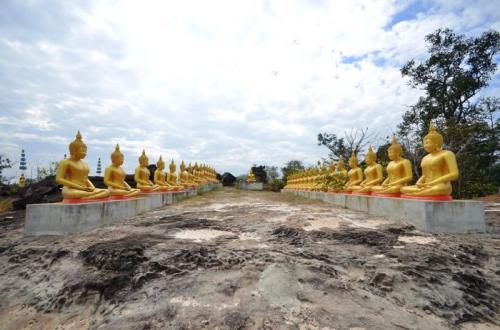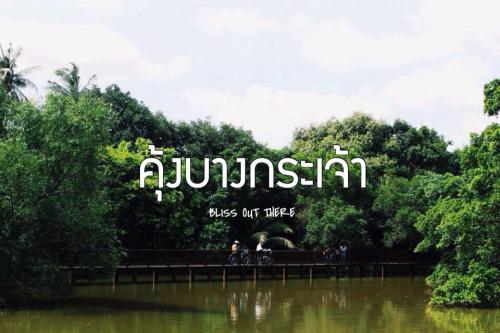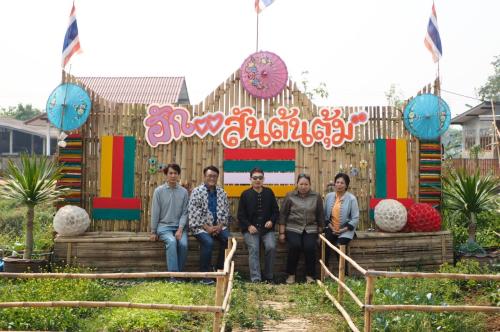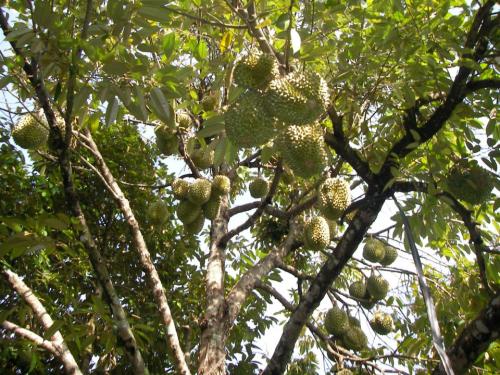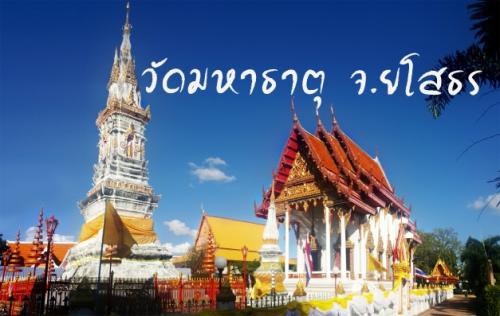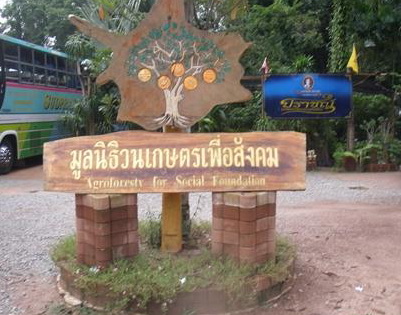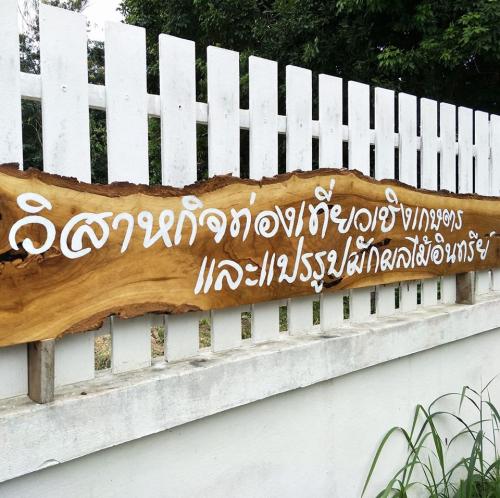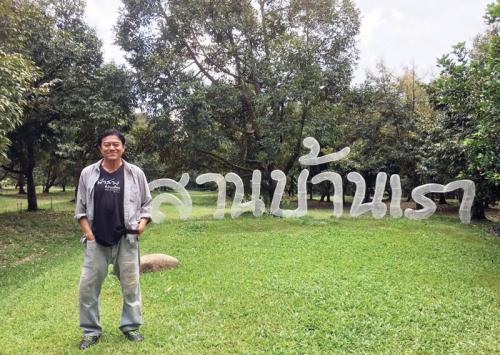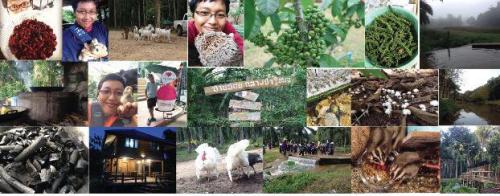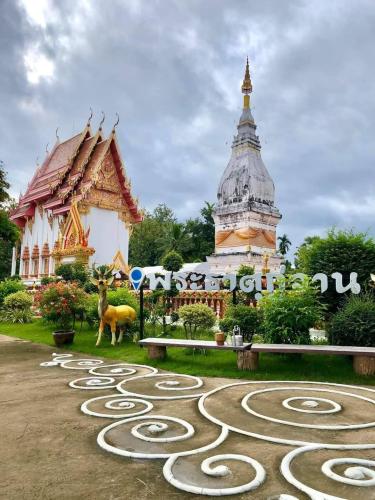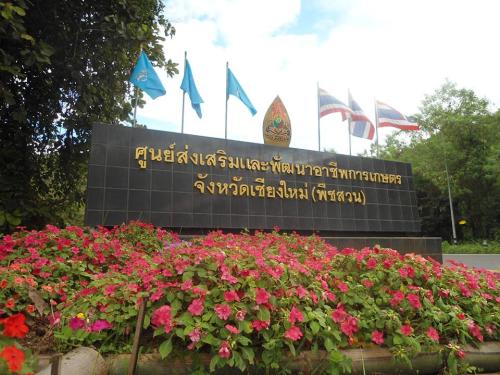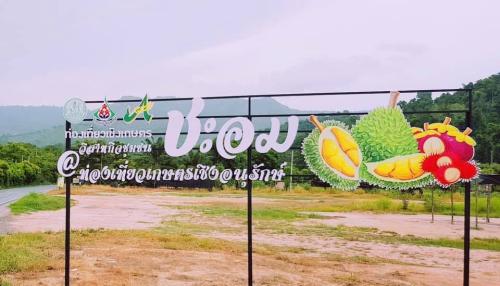Weather
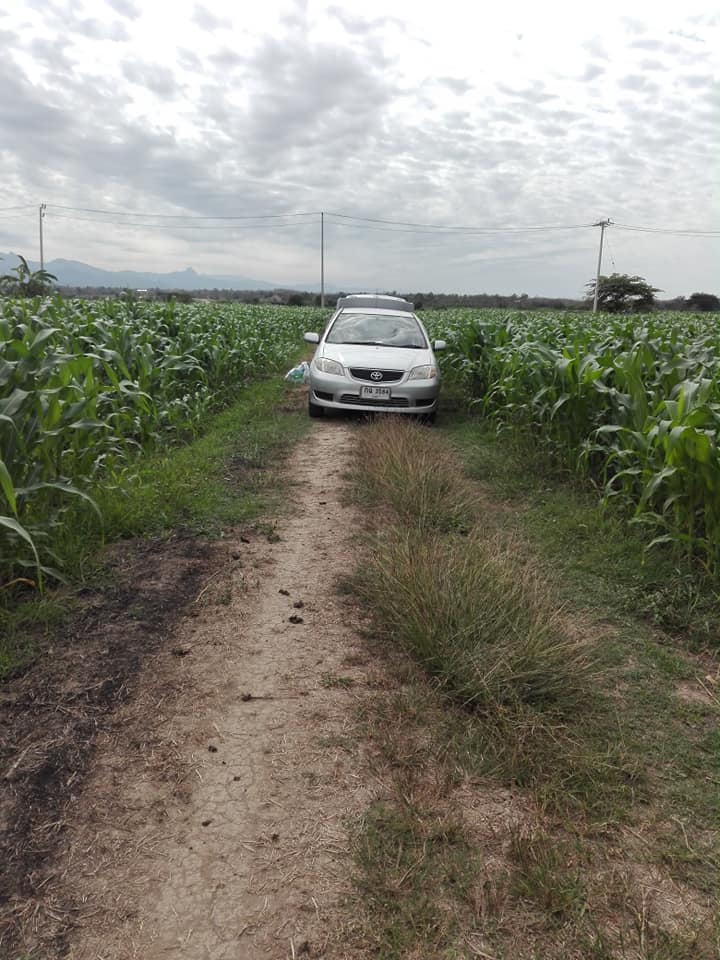
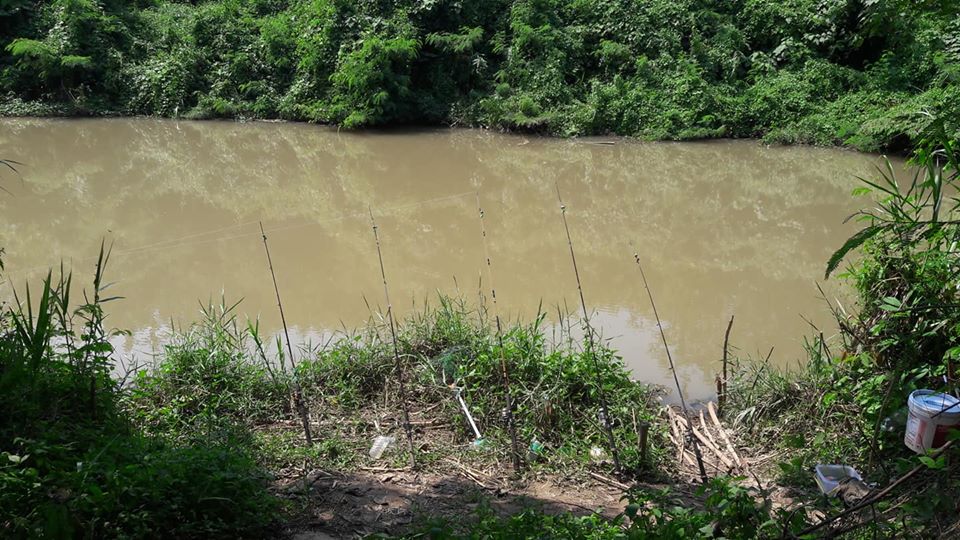
Open
Business hours
• Sunday
: 09:00 - 16:00
• Monday
: 09:00 - 16:00
• Tuesday
: 09:00 - 16:00
• Wednesday
: 09:00 - 16:00
• Thursday
: 09:00 - 16:00
• Friday
: 09:00 - 16:00
• Saturday
: 09:00 - 16:00
Note
: -
Map
Review Score
0
Source
Thailand Tourism Directory
Recommended
Entrance fees
• Entrance fees: Non-fee
• Remark : -
Review (0)
Write Review
0
จาก 5.0
Availability
Value
Service
Relate Agritourism
Phu Tham Phra is a large cave, about 3 wa wide, about 8 wa long, located on the southern slope of the mountain. There is an entrance along the rock niche which is majestically located around a tunnel; from the mouth of the cave to the north can walk comfortably. Tham Phra Buddha Cave has 2 levels of nature as a place to be enshrined of Buddha statues, which are lined up in rows and there are 2 reclining Buddha images, Phra Kajjana Buddha images, built during the reign of Ajarn Dee Chano in this beautiful cave
Phu Tham Phra is a small mountainous area. The area is about 200 rai, with mixed deciduous forests that are generally quite complete, providing shady, cool weather. It is the watershed source of many creeks. The stone pillar looks like a tourist attraction of Phu Pha Thoep. And there is a viewpoint as a beautiful natural source near the ascent, there will be a brick arch to be "Phu Ngo", the locals call Khong Gate which is located in the north of Phu Tham Phra, about 1 kilometer away. Currently, only ruins remain.
The sanctity of Phu Tham Phra that has been passed down from generation to generation is that if villagers in that area go out to find forest products; they must come to this cave to worship. Then there will be luck in making a living and escape from all dangers.
Yasothon
Khung Bang Kachao is a part of the curved area of Chao Phraya River. Its shape is like a pig's stomach, covering wide areas of 6 sub-districts of Phra Pradaeng District, Samut Prakan Province. Including Bang Ka Chao, Bang Nam Phueng, Bang Ko Bua, Bang Krasao, Bang Yo, and Song Khanong, in which the area approximately is 19,200,000 square meters. On September 14th, 1977, a cabinet resolution was made to designate ""Khung Bang Ka Chao"" as the green area being suitable for cultivation without permission to construct buildings more than the regulative height. In 2006, Time magazine praised Bang Krachao as The best Urban Oasis of Asia, also known as the best lung among the urban in Asia. Even though many decades go by, this place is still considered as the ""lung"" to efficiently purify the air in Bangkok and Samut Prakan.
Agricultural activities in Khung Bang Kachao area will be a bike ride through the green space that is becoming a popular activity Because it is like an oasis that gives an oxygen for the city with the garden area around 320,000 square meters. There are many types of large trees and banyan roots covering with spectacular tree tunnels that make there shady and relaxing. There is also an interesting agricultural lifestyle and local wisdom, and stopover spaces to do the activity with farmers and community enterprise groups
Program tour
1. Visit the golden mango orchard (Nam Dok Mai Khung Bang Kachao, the latest Thai GI mango) by Lt. Col. Chamnan Onyam, the President of Golden Mango Producer Club in Samut Prakan, the President of Community Enterprise, Colonel Agriculture and the owner of the golden mango orchard in Khung Bang Kachao area. He becomes the expert to give an information and sell the product and scion.
2. Visit an ornamental plantation (Golden croton, Sealing-wax palm, and Cordyline) leading by Ajarn Narong Samleerat, the chairman of Learning Center for Enhancement of Agricultural Production, Phra Pradaeng District and Ajarn Somsak Samleerat, the agricultural philosopher. They become speakes to give an information and sell the trees.
3. Visit the integrated agricultural garden, Smart Farmer in Bang Kachao Subdistrict
4. Community enterprise for Health Sciences Activities, including massage with herbal compress, showing how to make herbal compress balls, and selling neck pillows, cereal belts, compresses, shoulder pillows and acupressure pillows.
5. Herbal Fragrant Incense House Community Enterprise with herbal incense making, tie-dye fabric making, and homestay service
Linked routes with other tourist attractions
(Every place is within Kung Bang Kachao. Phra Pradaeng District Samut Prakan Province)
- Bang Nam Phueng Floating Market, Bang Nam Phueng Subdistrict
- Sri Nakhon Khuean Khan Park and Botanical, Bang Kachao Subdistrict
- Siamese Fighthing Fish Gallery, Bang Kachao Subdistrict
- Bird Watching Tower, Bang Kachao Subdistrict
- Boat Museum, Bang Ko Bua Subdistrict
- Bangkachao vegetable warehouse
Community enterprise products
- Health Craft Community Enterprise, such as, neck pillows, cereal belts, compresses, shoulder pillows, and acupressure pillows
- Herbal Incense House Community Enterprise, such as, fragrant incense, and tie dye crafts (bags, clothes, and scarves)
- Coconut sugar
- Ornamental plants, such as Golden croton, Sealing-wax palm Cordyline, limes' scions, etc.
- Fruit trees, such as mangos, mangos' scions, limes, limes' scions, etc.
- Arts and crafts from community enterprises, such as auspicious wood from lucky stones, flowers from fish scales, and flowers from gossamer fabrics.
Samut Prakarn
A village that grow organic vegetables. Visitors can come and learn how to compost from garbage, making compost from oyster snails, and cultivation of organic vegetables from the royal family of Chakphan Pensiri.
Able to visit every day.
Tel 08199896279
Phayao
Visiting the garden and eating fruits such as durian, rambutan, mangosteen, and longkong.
- Ecotourism activities at the Huai Kha Khaeng buffer zone
- Nature Trail
Tourism Program:
1. Watching the integrated agro tourism, such as an orchard of guava, Wong Bo lime and fresh mulberry.
2. Visiting the orchard and eat quality fruits such as durian, rambutan, mangosteen, and longkong.
3. Ecotourism at the Huai Kha Khaeng buffer zone
4. Seting up a tent to relax at Huai Nam Ring Reservoir in the area of Huai Kha Khaeng buffer area
The direction that links with other attractions:
- Paying homage to Luang Por Sema at Wat Pa Sak, which is a local monk of Lan Sak District, a distance of 5 kilometers.
- Visiting Huai Kha Khaeng National Park, a distance of 12 kilometers.
- Hup Pa Tat, a distance of 10 kilometers.
- Samo Thong Hot Spring, a distance of 12 kilometers.
Uthai Thani
Phra That Yasothon or Phra That Anon located in front of the ubosot; it is one of the important old relics in the northeastern region. It has Rectangular chedi with a top similar to Phra That Phanom, and inside the Phra That contains the relics of Phra Anon. The construction was influenced by Laos art that was popularly built during the late Ayutthaya period to the early Rattanakosin period which corresponds to the history of setting up the city and the history of Wat Mahathat
Yasothon
Ban Santitham is located on the area of 16,000 square meters with more than 700 kind of healing herbs spread over the area. There is also a Thai wooden house which is used to exhibit a variety of ancient agricultural tools, and there is a barn, rice threshing and rice milling equipment display behind the house. In addition, a part of the house is reserved for youth camp with the space for recreation activities.
Chachoengsao
Agricultural Tourism Group, Warin Chamrap District Ubon Ratchathani Province Consists of 6 organic gardens as follows:
- Chan Chuen Park is located at 8 Moo 8, Saensuk Subdistrict, Warin Chamrap District, Ubon Ratchathani Province. The uniqueness of the garden is a fish pond with organic farming, such as perfumed coconuts, golden bananas, pandanus, and many other fruits.
- Sala Ubon Park (Sala Indo) is located at 162 Moo 10, Kham Kwang Subdistrict, Warin Chamrap District, Ubon Ratchathani Province. The uniqueness of the garden is a blend of organic farming such as Salak, various types of bananas, various papaya species, ornamental plants (Slipper plant and Bauhinia aureifolia).
- Baan Ka Suan is located at 235 Moo 10, That Subdistrict, Warin Chamrap District, Ubon Ratchathani Province. The uniqueness of the garden is a blend of organic farming, such as mulberry, figs, stevia, and a variety of vegetable and fruit varieties. The highlight will be products processed from the fruit within the garden.
- Niramon Horse Farm is located at 227 Moo 1, Kham Kwang Subdistrict, Warin Chamrap District, Ubon Ratchathani Province. The uniqueness of the garden is that it is a horse farm. There are various breeds of horses with carriages, which are symbols of the past of Warin Chamrap District. There are horse riding courses and organic farming.
- Suwankut Lychee Garden is located at 86 Moo 8, That Subdistrict, Warin Chamrap District, Ubon Ratchathani Province. The uniqueness of the garden is a blend of organic fruit orchards such as lychees, dragon fruit, mushroom farms, bananas, mangosteens, jackfruits, durians.
- Ratchaphuto Park is located at 59 Moo 10, Saensuk Subdistrict, Warin Chamrap District, Ubon Ratchathani Province. the uniqueness of the garden It will be a blend of organic farming such as papaya, Cavendish bananas, papaya plants, organic vegetables. The highlight will be a place to learn about the underground water bank system.
Tour program:
2 days 1 night travel program, price 990/person (30 people)
Activities of agro-tourism and organic fruit and vegetable processing
Day 1
9:00-11:00 Ratchaphuto Park
Welcome tourists with flower garlands
Take a walk through the mixed agricultural plantation
Learn about the underground water banking system
Brake with garden products
Vegetable cultivation activities You can also bring back the vegetables you planted.
11:30-13:00 Salak Ubon, Salak Indo Garden
Lunch Local food (wild rice)
Take a walk through the orchard / seasonal fruits
Learn how to cut papaya
Grow Salak and get the planted tree back as well
14:00-16:00 Baan Ka Suan
Walk around the orchard to pick fruit and do activities
Brake with garden products
Learn medicinal plants for health
Processing activities mulberry, figs, stevia
Introduce group products and receive garden souvenirs
16:30-18:00 Niramon Horse Farm
Riding a horse carriage from Ban Ka Suan to Niramon Horse Farm
Horseback riding/walking through the mixed agricultural plantation
Learn basic horse riding
Activities with horses horseback riding, horse control, photo shooting with horses,horse bathing, show a clever horse
overnight stay Niramon Horse Farm or Suwanakut Lychee Garden
19:00-22:00 Niramon Horse Farm (Growing a tent, cowboy style) or Suwannakot Lychee Garden
Dinner
Rumbaisri, community performance
Recreational activities
Day 2
7:00 – 8:30 Niramon Horse Farm or Suwanakut Lychee Garden
Alms giving, listening to the Dharma
Have breakfast
9:00-11:00 Suwanakut Lychee Garden
Walk around the lychee orchard, dragon fruit/seasonal fruits
Brake with garden products
Learn to grow fairy mushrooms
Mushroom farm activity You can also take the mushroom cubes back.
11:30-13:30 Chan Chuen Park
Walk around the garden/seasonal fruit/feed the fish
Learn how to make compost without turning the pile
Tree planting activities You can also bring back the planted plants.
Lunch
Route links to other attractions:
- Wat Nong Pa Phong (Luang Pucha) 12 kilometers
- Farm Hug Por Ubon 15 kilometers
- Thung Nong Ya Ma 5 kilometers
- Flower garden decorated at Ban Ta Tid 15 km.
- Khu Duea Beach 15 kilometers
- Travel to nearby communities by bicycles, such as vegetable plots, flower beds, rice farms, Kham Kwang temples, and herbal houses.
Ubon Ratchathani
"Banrao Durian Orchard" has various durian species to taste and feel a real texture of rare durians, which only a few people could experience this taste. This orchard is a place that growing varieties of durian with the best quality to be worthy of being a high-class fruit that has been known as "King of Fruits"
Rayong
Little House in the Big Wood is a learning center of sufficiency economy philosophy. It was established by the new generation of agriculturists who would like to inherit sufficient agriculture. By applying a house and garden as the learning center for visitors.
Chumphon
Phra That Kuchan Located within the Ban Ku Chan Temple is an important sanctuary. People of Yasothon and nearby provinces pay their respects. The appearance is a square lotus-shaped chedi, shaped like Phra That Phanom, but smaller. The part of the lower base in the shape of an inverted lotus is a low facing lotus. Supporting a flat rectangular high base connected with a square lotus shape decorated with exquisite and beautiful patterns in ancient times. and the top of the relic in a square shape, which supports the tiered top From the evidence, it should be built according to the general motto of building relics, namely, to contain the Buddha's relics. Each year, a water bathing ceremony is held to preserve the good traditions.
Architectural features: Phra That Ku Chan, width 5.10 meters, height 15 meters. Location is located at Ban Ngew. In the middle of the courtyard of Wat Ku Chan, Ku Chan Subdistrict, Kham Khuean Kaeo District, Yasothon Province which looks similar to Phra That Phanom. The only difference is the size that Phra That Ku Jan is smaller.
Significance to the community: It is a place of worship for the people of Yasothon and nearby provinces. Every year, the people of Ku Chan sub-district will bring water, perfumes to bathe the relics in the morning of the full moon of the 6th month. In the afternoon, they go to bathe the water ceremony. Ku" after that, they will take them to Nong Sa Phang to bring water from Nong Sa Phang to perform the ceremony Pouring water on relics and bai sema which this ritual must be done annually There is a belief that if the ceremony is not performed, it will cause rain out of season; the villagers of Gu Zhan therefore practice this ritual regularly.
Yasothon
"...Taste the tea......Chiangda vegetable tea produced in the center.
...see the garden...see the plots to learn about agriculture Flowering plants - ornamental plants, fruit trees - perennial plants, sufficiency economy, vegetable and herb plants, economic insects, check dams, rare plant collection plots, natural check-in points, nature walks, watershed viewing, viewing Local birds...etc.
...invite to shop...agricultural products of the Farmer Network group at the sales point in front of the center.
Tourism program :
1 day trip inside the center
2 days 1 night trip..with other nearby attractions
Route links to other attractions:
'- Ban Tai Lue, Ban Luang Tai Distance before reaching the center 7 km.
- Sri Mung Muang Temple Distance before reaching the center 7 km.
- Wat Phra That Doi Saket Distance before reaching the center 7 km.
- Nong Bua Phra Chao Luang Distance before reaching the center 5 km. Suspension bridge Mae Kuang Udom Thara Distance before reaching the center 10 km.
- Doi Saket Hot Spring Distance from the center 9 km.
- Huai Hong Krai Royal Development Study Center The distance from the center is about 4 km.
- Royal Initiative Project, Agricultural Learning Center, Demonstration Field, 85 Rai
The distance from the center is about 7 km."
Chiang Mai
It is an area that connects to Khao Yai National Park; thus, this area has an abundance of nature. And, the villagers here make seasonal orchards, and it is suitable for natural tourism .There is also a tree dug around, selling various seedlings and a camping ground
Saraburi

